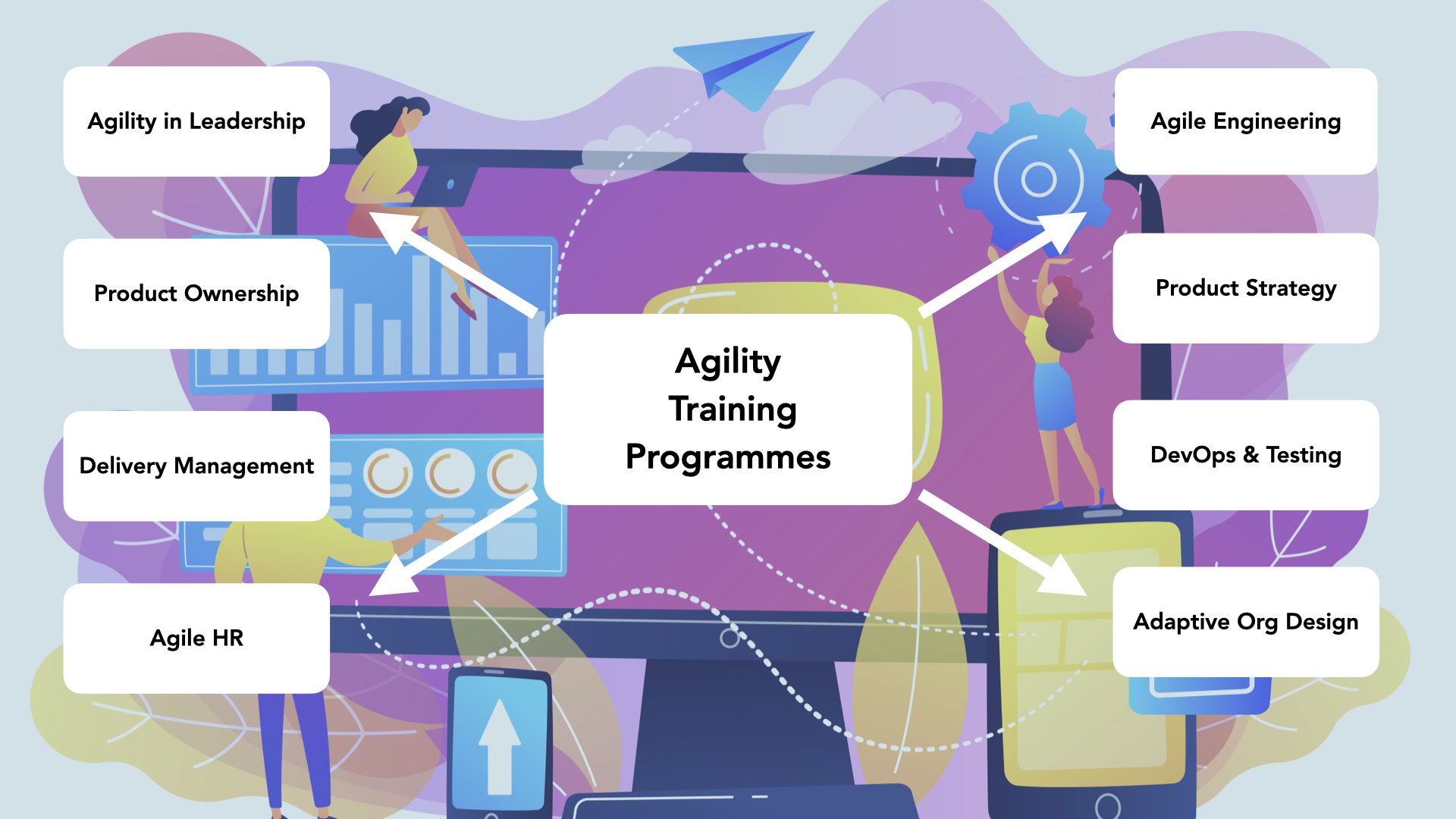How organisations build business agility through up-skilling & cross-skilling
We’re at an exciting time of evolution in the Middle East economy. It’s a time when businesses & governments must look to future-proof themselves and their people. In this article from The National News, Samar Sayegh, PwC Partner and PwC's Academy Middle East Leader writes “As the global economy grapples with skills and labour shortages, including here in the Middle East, skills that empower transformation strategies are being prioritised.”
As Transformation Consultants, we believe business agility is the long-term strategy for economic success and sustainability, building organisations into engines for continuous innovation and growth.
Transforming a ‘workforce’ into a future-proofed talent-base fuelled by ongoing investment in upskilling and cross-skilling, can evolve businesses into learning organisations. This creates the right environment for innovation.
Peter Senge, the renowned Senior Lecturer at MIT and author of ‘The Fifth Discipline: The Art and Practice of the Learning Organisation’ states that a learning organisation is “an organisation that facilitates learning between its people, to continuously transform themselves, and so the overall organisation.”
Two of the five disciplines he focuses on are Personal Mastery and Team Learning:
Personal Mastery is when an individual is continually seeking personal growth and learning to create the results they seek
Team Learning is the discipline by which personal mastery and a shared organisational vision are brought together
To build talent density and team excellence, have empowered and collaborative teams and an inspirational leadership team, companies need investment in up-skilling and cross-skilling. This investment can develop local talent, and increase an organisation’s ability to attract the best talent globally.
Providing progressive and continuous personal and team development opportunities, at the heart of a business, can transform it into a learning organisation.
HR & Talent Teams must focus on the strengths of their people. When organisations move towards agility, they tend to shift their assets away from non-value-added work. Consequently, it becomes imperative for organisations to use the available talent discerningly. To develop those with great potential for success through training and coaching.
Companies need savvy leaders who can identify individual skillsets among their workforce and customise development plans accordingly.
Leaders need to identify gaps in their team skillsets and collaborate with the HR team to build progressive training and coaching programs.
“Saudi Arabia’s Vision 2030 and the UAE’s Vision 2031 both outline their aims of creating a globally competitive workforce – with upskilling being the key driver for their transformation agendas, as well as developing a sustainable platform for nationalisation to take hold.”
Conclusion:
Investment in upskilling and cross-skilling can ensure organisations:
Build business agility to ensure economic success and sustainability
Evolve into learning organisations, where continuous growth and innovation thrives
Nurture local talent
Attract and retain the best talent globally
I hope you found this article useful. If you want to learn more about the diverse business agility training which Agile-Leads provides throughout MENA, with my partner’s at VIDSCOLA DWC, message me on Linkedin or email me directly at rhudson@agile-leads.com.


